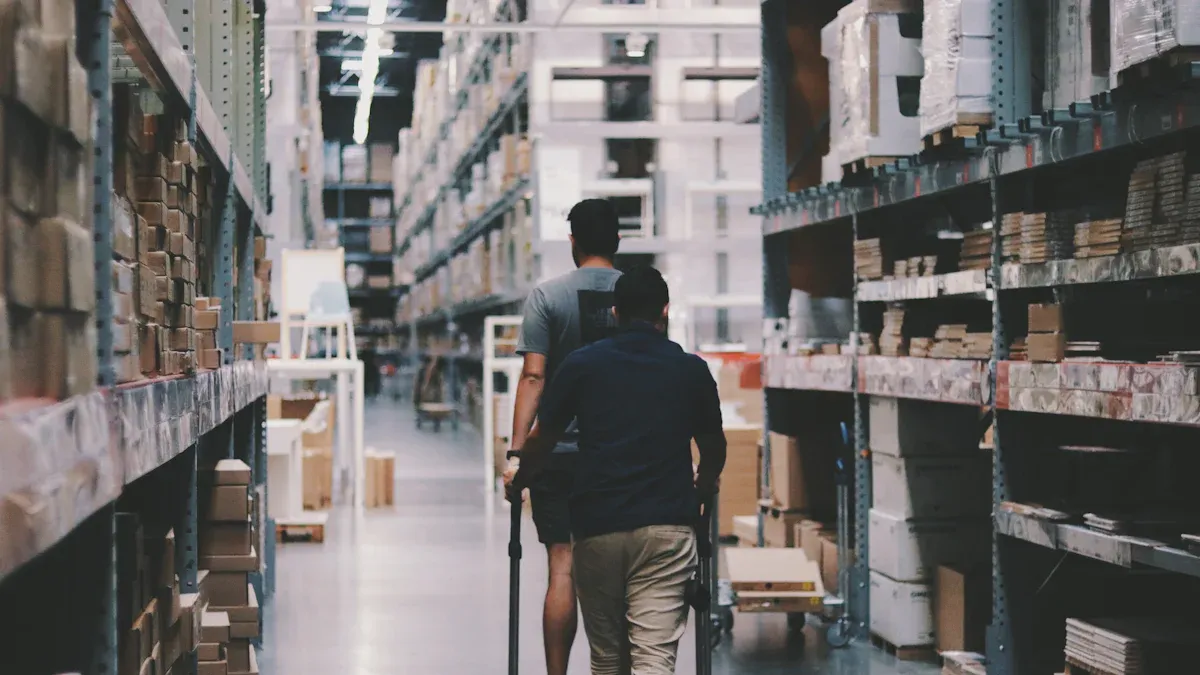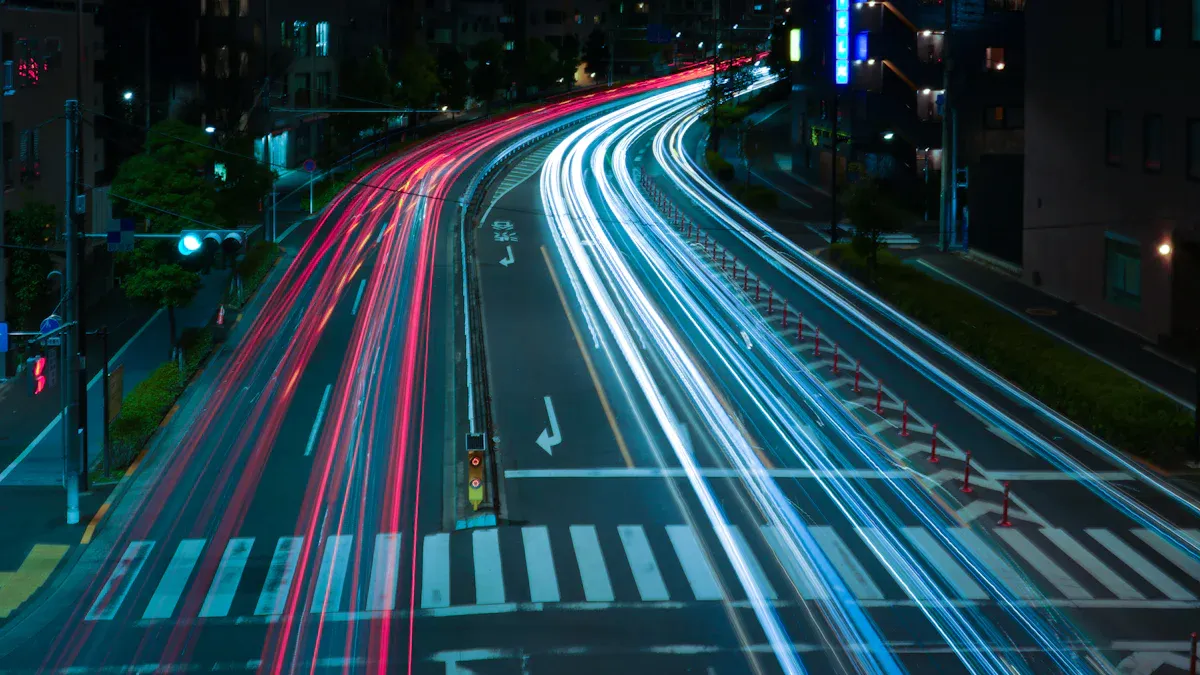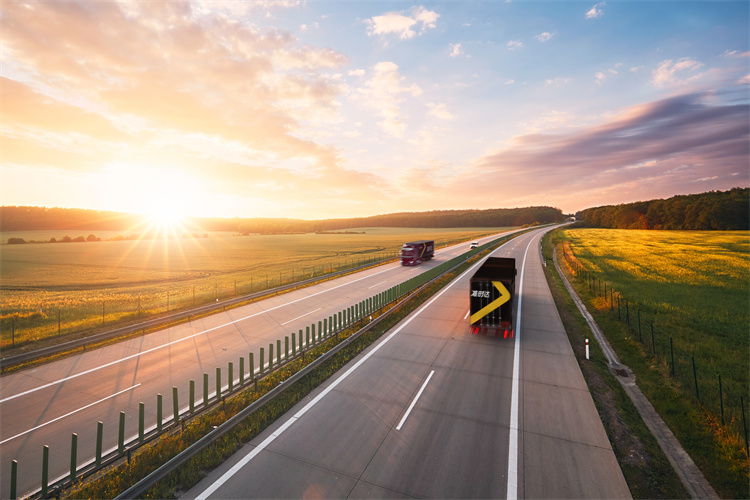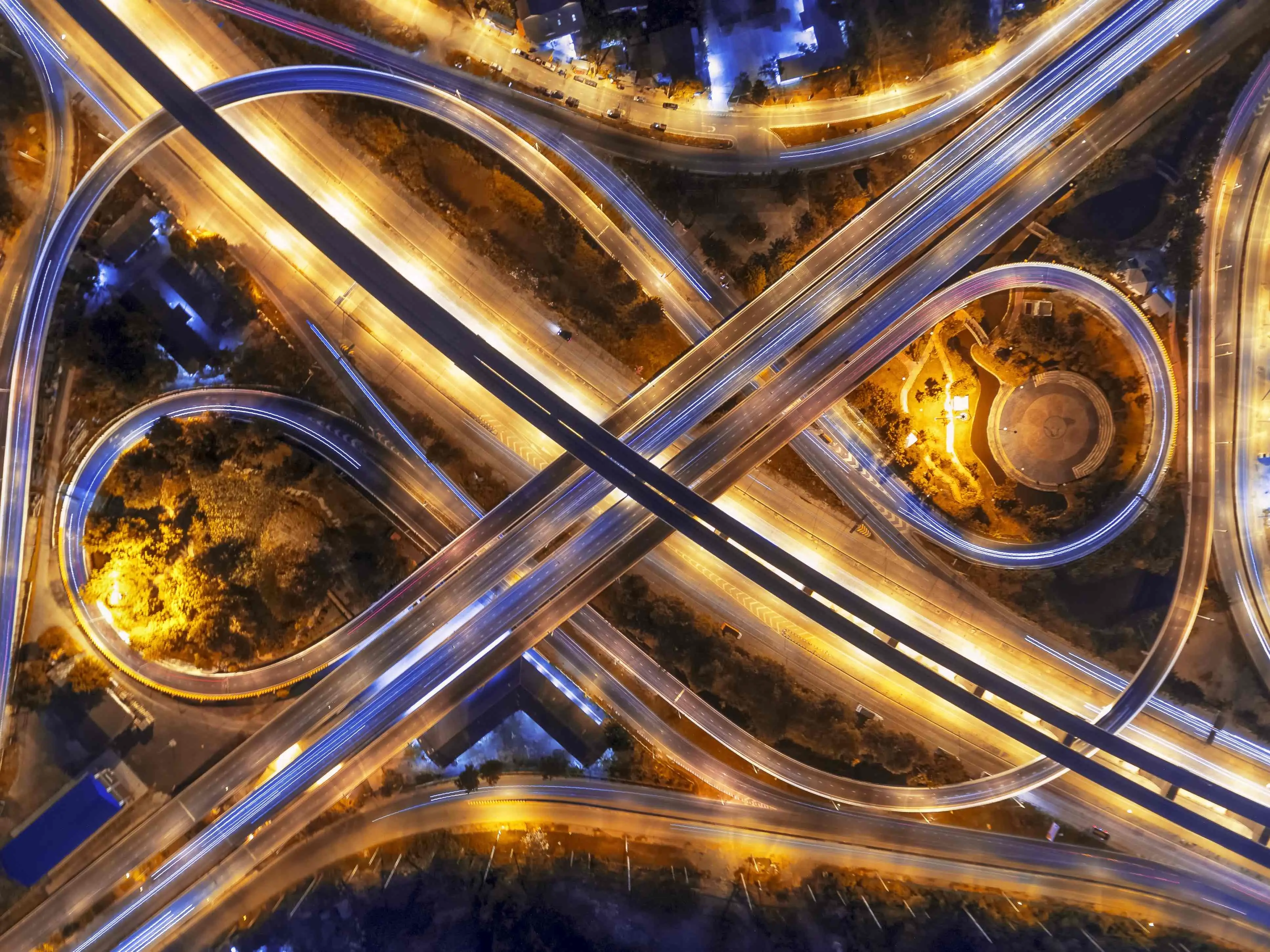How Digital Logistics and Traditional Logistics Differ in 2025

Digital logistics in 2025 uses new technology and data. This helps with real-time tracking and automation. It also makes things work better and faster. Traditional logistics uses manual steps and slower data sharing. These main differences change how well businesses do in many fields. The chart below shows how technology helps logistics work better. It gives more visibility and lowers costs.
Key Takeaways
Digital logistics uses technology like AI, IoT, and automation. These tools help make deliveries faster. They also lower mistakes and save money. - Real-time tracking and data sharing help companies a lot. They give better control and help fix problems fast. - Traditional logistics depends on people and old systems. This can cause delays and cost more money. It also makes customers less happy.
Technology in Digital Logistics

Automation and AI
E-logistics has changed how companies move goods. Digital freight forwarders use automation and AI to make work faster and more accurate. Robots pick and sort packages in warehouses. AI systems help plan the best delivery routes. These tools lower costs and reduce mistakes. JUSDA’s JusLink platform uses AI to predict demand and manage risks. JusAI helps with real-time decisions, while JusElsa answers questions and gives updates. Many digital freight forwarders use these e-logistics solutions to improve service. AI also checks equipment for problems before they happen. This keeps trucks and machines working longer. Digital logistics uses these smart tools to help companies save money and deliver faster.
Companies that use e-logistics solutions see fewer errors and faster deliveries. AI and automation help digital freight forwarders keep customers happy.
IoT and Cloud Platforms
IoT devices and cloud platforms give digital freight forwarders more control and visibility. Sensors track where trucks and packages are at all times. RFID tags and smart cameras watch inventory in warehouses. Cloud systems collect this data and show it on dashboards. Managers can see problems and fix them quickly. JUSDA’s JusLink connects IoT devices and cloud tools for better tracking. E-logistics solutions use these systems to prevent lost items and delays. Digital logistics depends on these platforms to keep everything running smoothly.
Technology | What It Does | How It Helps Digital Freight Forwarders |
|---|---|---|
IoT Devices | Track location, temperature, and condition | Real-time updates for e-logistics |
Cloud Platforms | Store and analyze big data | Fast decisions and better planning |
Digital freight forwarders rely on e-logistics solutions to manage large networks. These tools help them scale up and serve more customers.
Traditional Logistics Methods

Manual Operations
Traditional logistics in 2025 still uses many manual steps. Workers pick and pack goods by hand. They also ship items without much help from machines. Traditional freight forwarders use paper forms and spreadsheets to track shipments. These manual steps cause more mistakes. For example, picking by hand can lead to a 4% error rate. In a medium warehouse, this means hundreds of errors each month. Each mistake costs money and takes time to fix. Labor costs go up because more workers are needed for more orders. Manual work makes up about 65% of all warehouse costs. When orders grow, companies must hire more staff. This adds even more cost. These problems slow down shipping and make it hard to meet demand.
Manual steps in traditional logistics often cause delays and missed sales. Customers may not be happy when things are late.
Limited Data Tools
Traditional freight forwarders often use old software and legacy systems. These tools limit what companies can do with their data. Some common problems are:
Legacy software only gets small updates and few new features.
Traditional logistics systems do not connect well with other tools. This makes sharing information hard.
Data stays in silos, so companies cannot see everything or find trends.
Reporting is basic, so managers have less control and less insight.
On-premise systems cost more to keep running and upgrade.
Traditional logistics cannot change quickly when the market changes. Traditional freight forwarders have trouble making smart choices because they do not have real-time data. Digital solutions like JUSDA’s JusLink give companies better control, lower costs, and more visibility.
Data and Visibility
Real-Time Tracking
E-logistics in 2025 uses new technology for real-time tracking. Companies use GPS, RFID, Bluetooth, and IoT sensors to watch shipments and inventory. These tools send updates about where things are and their condition. Real-time data lets teams know where goods are all the time. JUSDA’s warehouse systems, like eVMI and JusLink, track inventory in real time. Managers can find problems early and fix them fast.
Real-time visibility gives live updates on shipments and inventory.
E-logistics uses tracking tags and dashboards for accurate arrival times.
Geofencing warns managers if goods leave safe areas.
Real-time data helps companies stop delays and save money.
E-logistics makes route planning and inventory control better.
Companies using e-logistics have fewer stockouts and recover faster after problems. Real-time visibility also helps customers trust delivery times.
End-to-End Transparency
End-to-end transparency means teams can see every step in the supply chain. E-logistics platforms like JusLink connect data from warehouses, transport, and suppliers. This gives managers a full view of the supply chain. They can track shipments, check inventory, and fix issues right away.
With e-logistics, managers use real-time data to make better choices. They can guess demand, pick the best carriers, and watch shipments on the way. After delivery, they look at data to plan better next time. End-to-end transparency lowers mistakes and helps teams work together. It also helps with rules and green goals in supply chain management.
Inventory Management
Digital Supply Chain Solutions
JUSDA’s warehouse product uses new technology to help manage inventory. Their systems, like eVMI and JusLink, show where items are right now and reorder them automatically. This stops companies from running out or having too much stock. The digital supply chain links suppliers and vendors, so everyone knows the stock levels and can work together. Automation cuts down on mistakes and lets workers do more important jobs. Managers get updates and dashboards to help them decide fast. Machine learning and AI guess what will be needed, change inventory, and find problems early. These tools help teams keep products moving and make customers happy.
Real-time updates and alerts stop stockouts.
Automated steps help move inventory faster.
Advanced analytics help with planning and guessing future needs.
Connected systems link supply chain management for buying, shipping, and selling.
JUSDA’s digital supply chain solutions help companies save money, work better, and react fast when demand changes.
Traditional Inventory Control
Traditional inventory control uses manual tracking and simple software. Workers use spreadsheets or paper, which can cause mistakes and slow things down. Collecting data by hand makes more errors and slows supply chain management. Companies might run out of stock, have too much, or lose sales because they cannot see inventory right away. Bad communication and slow work make fixing problems hard. Shipping limits and higher costs can slow orders and mess up the supply chain.
Aspect | Digital Supply Chain | Traditional Inventory Control |
|---|---|---|
High, with AI and IoT | Low, mostly manual | |
Visibility | Real-time, end-to-end | Limited, often delayed |
Collaboration | Integrated across supply chain management | Siloed, less communication |
Decision-making | Data-driven and proactive | Reactive and error-prone |
The digital supply chain gives companies better ways to manage inventory and keep up with today’s fast-moving supply chain management.
Delivery and Speed
Fast, Automated Fulfillment
Digital logistics in 2025 makes deliveries fast and accurate. Companies use IoT sensors and AI to watch shipments. Real-time tracking helps them know where things are. Autonomous vehicles and drones move packages quickly. These are used a lot for last-mile delivery. Robots in warehouses pick and pack orders very carefully. All these tools work together to stop delays and mistakes.
IoT and AI let companies see shipments and inventory all the time.
Drones and autonomous vehicles bring packages faster than before.
Robots help pick, pack, and sort things in warehouses.
Real-time tracking gives managers quick updates and helps fix problems.
AI analytics pick the best routes and guess what will be needed.
These new tools help companies fill orders fast and keep customers happy. Automated systems let them handle more orders without hiring more people.
Companies using digital logistics deliver faster and handle changes easily.
Manual, Slower Processes
Traditional logistics still uses a lot of manual work. Workers pick and pack items by hand. Paper forms and simple software slow down orders. These steps make it hard to keep up with what customers want right now.
Manual work causes delays and mistakes when filling orders.
Work often gets split up, so teams do not work together well.
Customers wait longer for their packages and may not get updates.
Old systems make it hard to deal with problems or changes.
Slow and unreliable deliveries make customers less happy.
When companies use traditional logistics, they have trouble keeping up with fast and correct deliveries. Customers may stop trusting them if orders are late or wrong.
Customer Experience
Personalized Service
Digital freight forwarders care a lot about their customers. They use technology to make each delivery special. Customers can pick when and where they want their packages. They can also choose eco-friendly shipping if they want. Real-time tracking lets customers see where their package is. Personalized messages keep them updated at every step. Digital freight forwarders use smart tools to plan the best routes. This helps stop failed deliveries and saves money for everyone.
Customers have more choices and control over deliveries.
Companies earn trust by meeting each person’s needs.
Digital freight forwarders give options like same-day or set times.
Customers get updates and can track packages live.
Businesses save money by missing fewer deliveries and using better routes.
Customer-centricity makes digital freight forwarders different. They listen to what people want and make things better. Companies like Amazon and Uber Eats show that personal service means faster deliveries and happier customers.
Standard Support
Traditional freight forwarders treat all customers the same way. They use basic help and simple delivery choices. Customers often cannot pick when or where to get packages. Updates about shipments do not come very often. Traditional freight forwarders answer questions by phone or email. This can mean longer waits and less happy customers.
Most traditional freight forwarders do not focus on customer-centricity. They follow old rules and give fewer choices. It is hard for them to keep up with what customers want. Digital freight forwarders, who care about customer-centricity, give a better experience. In 2025, companies using digital freight forwarders have happier and more loyal customers.
Cost and Efficiency
Optimized Operations
Digital logistics in 2025 helps companies save money and work faster. Automated systems do jobs that took hours before. Managers use real-time tracking to see shipments and fix problems fast. Data analytics help teams plan better routes and guess what customers want. These tools make everything smoother and more reliable.
Some main benefits of optimized operations are:
Teams solve problems faster because they spot delays quickly.
Better route control helps save fuel and time on deliveries.
Automation means less manual work and fewer mistakes.
Systems handle more orders as business grows, without extra cost.
Transportation Management Systems (TMS) help pick the best carriers and times.
Real-time tracking and TMS together show the whole supply chain clearly.
Companies using digital logistics make more money. They spend less on workers and fuel. Customers are happier because deliveries are faster and more accurate.
Higher Manual Costs
Traditional logistics uses a lot of manual work, which costs more and causes more mistakes. Workers spend lots of time entering data, checking papers, and fixing errors. These steps slow things down and make it hard to keep up.
Cost Driver | Impact on Manual Logistics Systems |
|---|---|
Labor-Intensive Data Entry | Higher overhead costs from doing the same work again |
Slow Processing Times | Delays up to 3 days, making it hard to respond fast |
High Error Rate | Up to 15% invoice mistakes, which can cost extra money |
Sales Team Time Consumption | 43% of time spent making quotes by hand |
Lack of Scalability | Costs go up as orders grow |
Absence of Automation | More mistakes and big losses for the industry |
Manual systems make it hard for companies to grow. When orders go up, they need more workers, which costs more. Mistakes in invoices and quotes can lose money and make customers unhappy.
Flexibility and Scalability
Agile Digital Supply Chain
A digital supply chain helps companies change fast when needed. Teams use smart tools like AI, machine learning, IoT, and digital twins. These tools show what is happening right now and help plan for problems. Cloud platforms let companies grow or shrink their work as needed. This helps them handle more orders when busy or slow down when things are quiet.
AI forecasting tools help teams guess what customers want next.
IoT devices watch inventory and shipments and give live updates.
Digital twins let managers try out plans before making choices.
Cloud systems make it easy to add new places or partners.
The digital supply chain removes old limits. It links demand planning, warehouse work, and supplier relationships. This makes logistics faster and more flexible. Companies can find risks early and fix problems before they get big. When technology fits business goals, teams can handle changes with confidence.
Companies using a digital supply chain can grow faster and help customers better because they can change direction quickly.
Rigid Traditional Logistics
Traditional logistics cannot change fast when things shift. These systems use fixed warehouses and set routes. When demand changes or problems happen, companies have trouble adjusting. This slows them down and costs more money.
1. Inflexible networks make it hard to meet new trends or needs. 2. Old processes cost more because they do not change easily. 3. Companies miss chances when they cannot enter new markets fast. 4. Slow changes in suppliers or production lines cause delays.
Traditional logistics also keeps money stuck in old inventory and fixed assets. Changing suppliers or moving goods takes a long time. These limits make customers less happy and stop businesses from growing. Companies can fall behind if they cannot change their logistics for new problems.
Sustainability
Green Technologies
Digital logistics in 2025 uses green technologies to help the planet. Companies use route optimization software to find the best truck routes. This saves fuel and lowers carbon emissions. Many fleets now use electric, hybrid, or fuel-efficient trucks for city deliveries. Some trucks use alternative fuels like LNG, CNG, biodiesel, or hydrogen. These changes help cut down pollution from transportation.
Eco-friendly packaging is important too. Companies pick recyclable, biodegradable, or reusable materials. Right-sized packaging means less waste and fewer trucks needed. Artificial Intelligence helps companies plan better and avoid extra trips. Automation in warehouses and order systems cuts mistakes and saves energy. These steps make logistics more sustainable and help companies reach their environmental goals.
Green technologies in logistics protect the environment and help companies do better.
Conventional Practices
Traditional logistics often uses old ways that hurt the environment. Many companies still plan routes by hand, which wastes fuel and time. Trucks and ships often use fossil fuels, which add greenhouse gases to the air. This causes more air pollution and global warming.
Bad route planning uses more fuel and makes more emissions.
Using fossil fuels adds more carbon dioxide to the air.
Old shipping ways can pollute the ocean and hurt sea life.
Companies pay more and can lose trust if they ignore green practices.
Switching to green logistics is hard because it costs more and people resist change.
Traditional logistics can harm the planet and a company’s image. Many businesses now try to find greener solutions.
Transition Challenges
Implementation Barriers
Businesses have many problems when switching to digital logistics. Some of the biggest challenges are:
New software, hardware, and training cost a lot of money.
Workers and managers may worry about losing jobs or new ways to work.
Many people do not know how to use digital tools or data analytics.
Old systems do not always work well with new ones.
Using cloud platforms and IoT devices can bring data security risks.
Manual steps make it hard for companies to grow fast.
There are not enough rules for the industry, so connecting systems is harder.
JUSDA has seen these problems in different industries. They help by making a plan and giving strong support. With platforms like JusLink, companies can add new digital tools to old systems and lower risks.
Change Management
Digital transformation is more than just new technology. It also means people must change how they work and think. Many workers worry about new systems and losing their jobs. Managers may not want to change old ways. Training is needed so everyone can use digital logistics tools.
JUSDA helps companies with these changes. They give training and talk clearly to guide teams. Their experience shows that matching digital changes with business goals helps a lot. Companies that plan and support their teams do better and grow faster.
Change is tough, but with good support and planning, businesses can switch to digital logistics and stay ahead.

JUSDA Solutions
To provide you with professional solutions and quotations.
Digital logistics in 2025 uses technology to track things right away. Automation helps companies work faster and see what is happening. JUSDA’s solutions make work easier and smarter for teams. Businesses can do well if they follow these steps:
Make sure your team knows how to use technology.
Pick the best new tools for logistics jobs.
Check contracts often to keep them up to date.
Change delivery routes when needed.
Watch shipments live as they move.
See Also
Paving The Way For Logistics Through Digital Innovation
How Digital Twins Are Transforming Supply Chain Systems
Artificial Intelligence Driving The Next Era Of Logistics
Will Digital Twins Lead Supply Chain Efficiency Improvements?
Exploring Cutting-Edge Technologies Shaping Future Logistics
